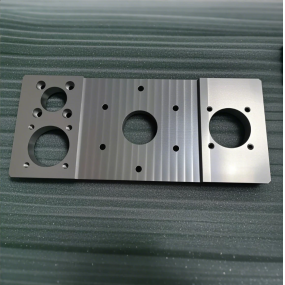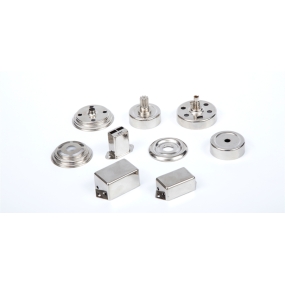Metal Stamping is a process that uses punches and dies to deform or break stainless steel, iron, aluminum, copper and other sheet and heterosexual materials to achieve a certain shape and scale. Metal stamping parts are widely used in aerospace, automobiles, ships, machinery, chemical industry and other fields, and have gradually become an important part in the current parts production industry. The production of metal stamping parts sometimes shows tearing, skew, etc., so what should be paid attention to when selecting stamping parts raw materials for metal stamping parts?
1. In the standard type of steel plate, whether it is a fixed-length plate or a coil, the same raw material and material thickness have different sales prices for different roll widths. Therefore, in order to reduce costs, it is necessary to work hard on the formulation of the purchased roll width, and try to choose a roll width range without increasing the price on the premise of ensuring the utilization rate of materials. For example, with regard to the fixed-length plate, try to choose the appropriate standard scale. After the cutting is completed from the steel mill, there is no need to perform secondary shearing to reduce the shearing cost; with regard to the coil plate, try to choose the standard and process of uncoiling to reduce the workload of secondary shearing and improve work efficiency;
2. The thickness of the plate has error requirements, but within the scope of error tolerance, the wrong plate should be selected first; 
3. Confirming the shape and size of the metal stamping sheet is a prerequisite for analyzing the degree of deformation of the stamping part, imagining the technicality and formulating the process specification. If the shape of the sheet is suitable, not only can the deformation spread unevenly along the sheet be improved, but also the number of mold trials and adjustments can be reduced, and then the production cycle can be shortened to improve productivity.
4. When selecting materials for product design, avoid using high-trademark raw materials to constitute excess product functionality. At the same time, under the premise of satisfying the product and process requirements, try to select the raw materials and material thicknesses used in existing mass-produced models to form a material platform, which is convenient for subsequent procurement and inventory handling. For example, the key function requirement of ordinary cold-rolled sheet is its tensile ductility, so try to choose low-trademark materials under the requirements of product quality. Regarding the selection of material thickness, in addition to considering the strength and weight of the body after forming, it is also necessary to note the popularization of expected thickness. Due to the special material thickness, it is difficult for suppliers to supply, and the price is also high.
This article is from EMAR Mold Co., Ltd. For more EMAR related information, please click: www.sjt-ic.com,


 English
English Spanish
Spanish Arabic
Arabic French
French Portuguese
Portuguese Belarusian
Belarusian Japanese
Japanese Russian
Russian Malay
Malay Icelandic
Icelandic Bulgarian
Bulgarian Azerbaijani
Azerbaijani Estonian
Estonian Irish
Irish Polish
Polish Persian
Persian Boolean
Boolean Danish
Danish German
German Filipino
Filipino Finnish
Finnish Dutch
Dutch Galician
Galician Catalan
Catalan Czech
Czech Croatian
Croatian Latin
Latin Latvian
Latvian Romanian
Romanian Maltese
Maltese Macedonian
Macedonian Norwegian
Norwegian Swedish
Swedish Serbian
Serbian Slovak
Slovak Slovenian
Slovenian Swahili
Swahili Thai
Thai Turkish
Turkish Welsh
Welsh Urdu
Urdu Ukrainian
Ukrainian Greek
Greek Hungarian
Hungarian Italian
Italian Yiddish
Yiddish Indonesian
Indonesian Vietnamese
Vietnamese Haitian Creole
Haitian Creole Spanish Basque
Spanish Basque











